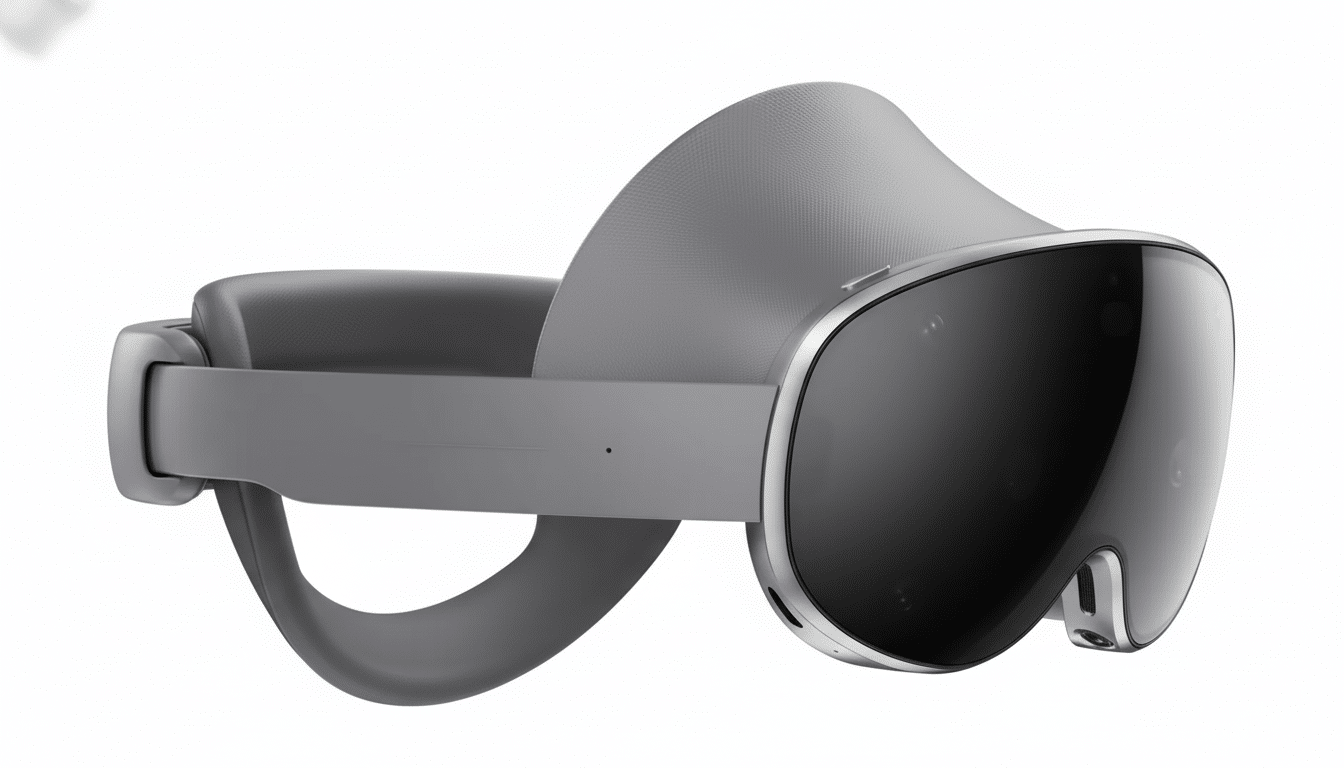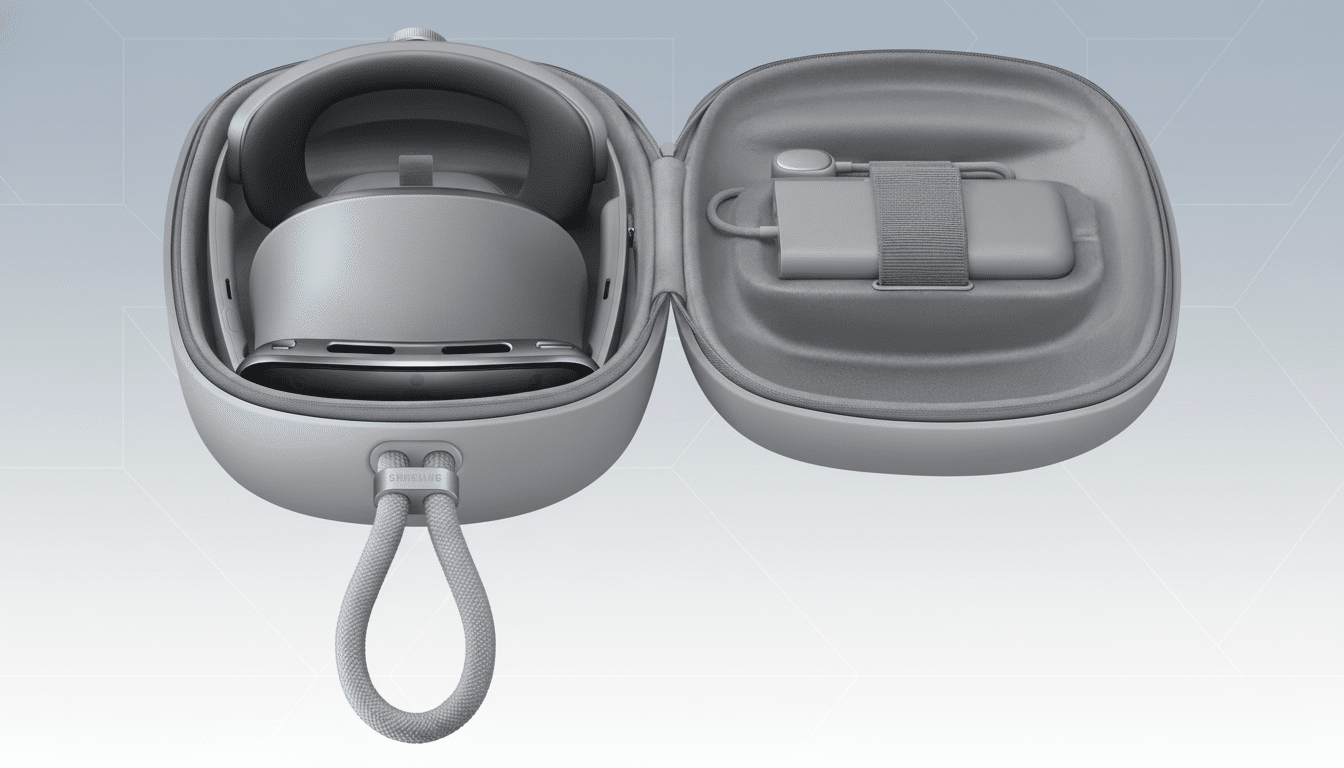The new Samsung Galaxy XR headset comes in at a very steep $1,799, and that’s just half of the story. Early customers receive an “Explorer Pack” of services and apps worth over $1,000, a collection that is intended to exhibit the headset’s best use cases on day one — from big screen streaming, to AI-assisted productivity.
It’s a simple strategy: reduce friction, give people something excellent that they can access and use immediately, and see what your hardware has to say for itself. It also makes the Galaxy XR, at a price that’s more competitive with higher-priced mixed reality competitors, answer a question on everyone’s minds in this space — what will I actually use it for?

What’s in the Explorer Pack for Samsung Galaxy XR
Key to the offer are yearlong subscriptions that users would otherwise have to pay for individually. It also bundles a full year of Google AI Pro, which gives you access to additional Gemini features and increased usage limits as well as 2TB of cloud storage connected to your Google account. For regular everyday use, this means beefier multimodal AI, more massive file handling and seamless single-sync across devices.
Entertainment is heavily represented. Purchasers will also receive 12 months of YouTube Premium, which offers — among other benefits — ad-free viewing and background play as well as a year’s access to Google Play Pass, with hundreds of games and apps free from ads and in-app purchases. The XR Pack also comes with a three-month trial of YouTube TV as part of the package, to try live sports and channel hopping on a large virtual screen.
Sports fans get more coverage, too, in the form of a 12-month NBA League Pass subscription for strong presentation of immersive viewing modes and multiview overlays. The remaining titles are comprised of wellness and creative standouts, including guided meditation and sleep soundscapes in Calm, NFL PRO ERA for interactive training and gameplay, Adobe’s Project Pulsar for spatial editing concepts, and Asteroid as an XR-native app designed for discovery and casual play.
Together, the bundle is intended to address three pillars that matter at this stage in spatial computing: cinematic media (displays for ATAP), hands-on creativity and everyday utility powered by AI.
How the freebies add genuine value to the Galaxy XR experience
Individually, these services aren’t cheap. The standard annual U.S. rates make Google’s AI tier cost about $240, YouTube Premium close to $168 and Play Pass approximately $60. Three months of YouTube TV adds up to close to $200 at current pricing; depending on promotions, NBA League Pass will cost you about four figures each season. Calm frequently sells for $70 a year or so, and premium XR apps and games offer extra value. Totals will vary by market, but the aggregate package does a credible job of crossing the seemingly magical $1,000 barrier.
But above and beyond the math, the freebies hasten the “aha” moments that convert a demo to a daily habit. Or watch live sports with a floating scoreboard and infographics to give you up-to-date statistics while you’re watching; put AI captions over anything spoken, in real time; or test out spatial timelines as part of your creative workflow — not just because they’re useful beyond being cool, but also to demonstrate why a mixed reality headset can be more than just a novelty.
Where this Samsung Galaxy XR offer fits in the market
Bundling as a competitive lever. As XR technology matures, bundling is starting to emerge as a competitive factor. Market researchers at IDC observed that fresh hardware cycles and more immersive content ecosystems are boosting growth after a rocky stretch for headset shipments. Meanwhile, premium phones need to justify cost with day-to-day utility, not just specs.

Against that backdrop, Samsung’s approach aligns with how regular people will actually use spatial tech: giving cinematic viewing a whirl and dropping into fitness or mindfulness; trying myriad games and getting AI assistance woven throughout it all. Unlike other competitors that promise limited-time app credits, or a game or two, this bundle is breadth-first and discovery-driven.
Real-world use cases to anticipate with Galaxy XR
For streaming, the headset’s virtual theater mode plays nice with YouTube Premium and YouTube TV, allowing viewers to resize screens, pin chat or stats and continue playing background audio while multitasking. Sports subscriptions like NBA League Pass leverage new multi-angle replays and spatial overlays that seem small on your phone but spread wide in a headset.
On the productivity end, Google AI Pro can transcribe videos or market research; write briefs; or organize those assets in that allotted 2TB of cloud storage.
On the more creative end, testers can upload spatial editing ideas to Adobe Project Pulsar, paving the way for more clever workflows that combine timelines, layers, and 3D space.
Wellness and training get some love, too: Calm to decompress and nail sleep (now in a gym shorts segment for pre-wedding naps), and NFL PRO ERA to up your workout game with goal-directed drills. These are the kinds of routines that turn occasional headset use into daily sessions.
Redemption tips and fine print for the Explorer Pack
Anticipate registration deadlines and regional availability.
- Many deals must be redeemed within a certain period of time after you buy them, and most auto-renew at regular price unless you cancel.
- Google AI Pro and YouTube benefits require a Google account.
- NBA League Pass and Calm may only apply to new or eligible accounts.
- Standard is one bundle per headset, and what’s being offered may vary by carrier or retailer.
The result: at $1,799, the Galaxy XR is still a pricey purchase; however, the Explorer Pack makes it significantly more accessible for those who want to see what mixed reality is capable of. For those who may have been on the fence, a year of premium services and a curated wall of apps makes the first few months with the headset feel more like it’s fully loaded than in an experimental phase.

